Kinryō Sake Museum
Author: Richard Perkins
Photos/Videos Taken: 2025/05/12
Address: Nakatadogun, Kotohira-cho,
Kagawa 623 【766-0001】
日本酒 (nihonshu), also known as rice wine, is a type of traditional Japanese alcohol. Alcoholic drinks in Japan have a long history, tracing back to the Jōmon Period (14,000–300 BCE), when rice cultivation began and the first forms of alcohol were said to be produced. Since then, breweries have spread throughout the country. One notable brewery is 西野金陵 (nishino-kinryō), located in Kagawa Prefecture. Founded in 1658 in Tokushima Prefecture, Nishino Kinryō originally produced 藍染め (aizome), a traditional indigo dye. The brewery began making rice wine in 1779 and relocated to Kotohira, Kagawa Prefecture, in 1789. While Nishino Kinryō’s rice wine is currently produced at a different site, the original brewery now serves as the Kinryō Sake Museum and gift shop, where visitors can learn about Nishino Kinryō and about how rice wine is made.
At the Kinryō Sake Museum, clear written explanations make the process of rice wine production easy to understand. In addition, there are numerous life-size figures and realistic models. Visitors can not only read about the steps involved, but also observe detailed recreations of each stage. This setup makes it incredibly easy to visualize the actual production process. The museum also uniquely highlights Nishino Kinryō as a special and charming brewery. After learning about rice wine, visitors can stop by the gift shop to purchase and sample various brews. Everyone is sure to find a type they like.
The brewery originally used in Kotohira city is a traditional Japanese wooden building. This structure is valuable, as the number of such buildings decreases each year. Visitors can not only learn about rice wine but also enjoy exploring the building itself. Here, you can see tools—such as large wooden barrels—used in rice wine production that are becoming increasingly rare. This is because many rice wine breweries now rely on large machines, and few continue to use traditional methods. This museum is truly a place where one can experience Japanese culture and history up close.
Also on display here is rice. In Japan, rice specifically used for alcohol production is called 酒米 (sakamai). Visitors can observe both processed and unprocessed sakamai. The flavor of rice wine changes depending on how much (or how little) the rice is polished. One can see exactly how much the rice changes through polishing and understand its impact on the flavor. This demonstrates the important role sakamai plays in the production of rice wine.
In addition to showcasing the rice wine production process, there is a display of various 猪口 (choku—cups used for drinking rice wine) and 徳利 (tokkuri—tall, slender bottles used to pour rice wine). Many visitors may be surprised to discover the wide range of styles. There are also a few 杉玉 (sugi-dama) on display—balls of pine often hung outside rice wine breweries. These start green, marking the beginning of production, and gradually turn brown, signaling the end of production. With their diverse shapes and sizes, the sugi-dama here are sure to fascinate those who visit.
As mentioned above, the number of traditional Japanese buildings decreases each year. Viewing a traditionally built brewery up close is a rare and special opportunity. At this museum, visitors not only learn about an important aspect of Japanese culture, but also (without a doubt) feel as though they've stepped back in time. Even those who do not usually drink alcohol will enjoy the Kinryō Sake Museum. Conveniently located near the famous Kotohira-gū Shrine, it’s easily accessible. When visiting Kagawa Prefecture, be sure to stop by and discover the charm (and appeal) of rice wine.
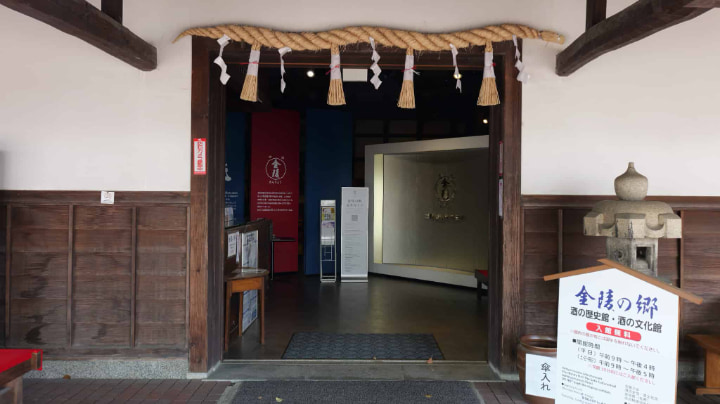
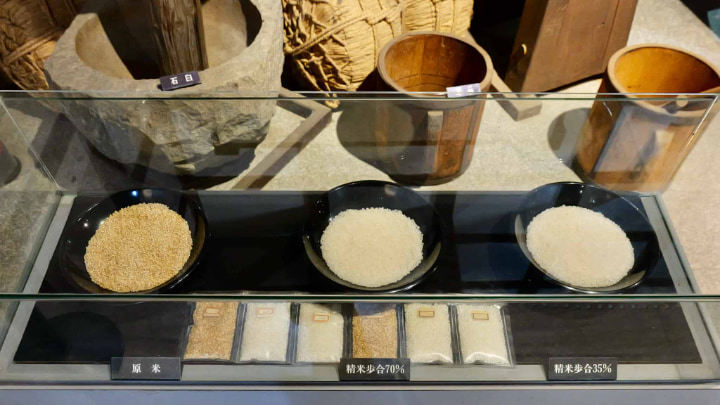
Here, uncooked and polished rice are compared side by side.
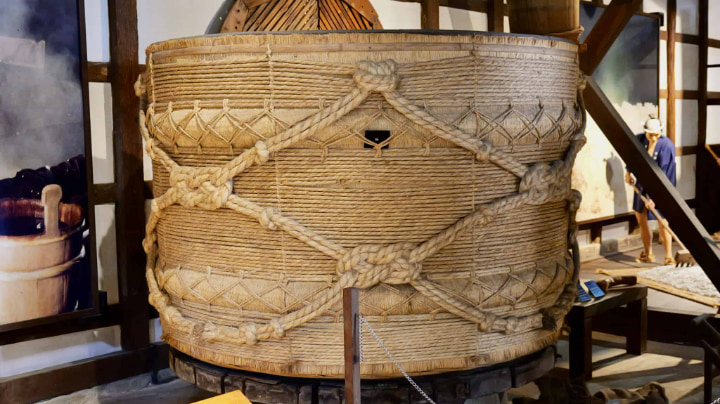
This process of rice wine production is known as “rice polishing・cleaning rice・steaming rice”.
When making rice wine, rice specifically grown for alcohol production is used. This rice, known as 酒米 (sakamai), is first polished, going from brown rice to white rice. The flavor and quality of the rice wine depend on how much the sakamai is polished, with each batch requiring different levels of polishing. After polishing, the rice is washed and then steamed. Unlike rice that’s eaten, sakamai is not fully cooked; steaming provides just the right amount of moisture needed in the rice.
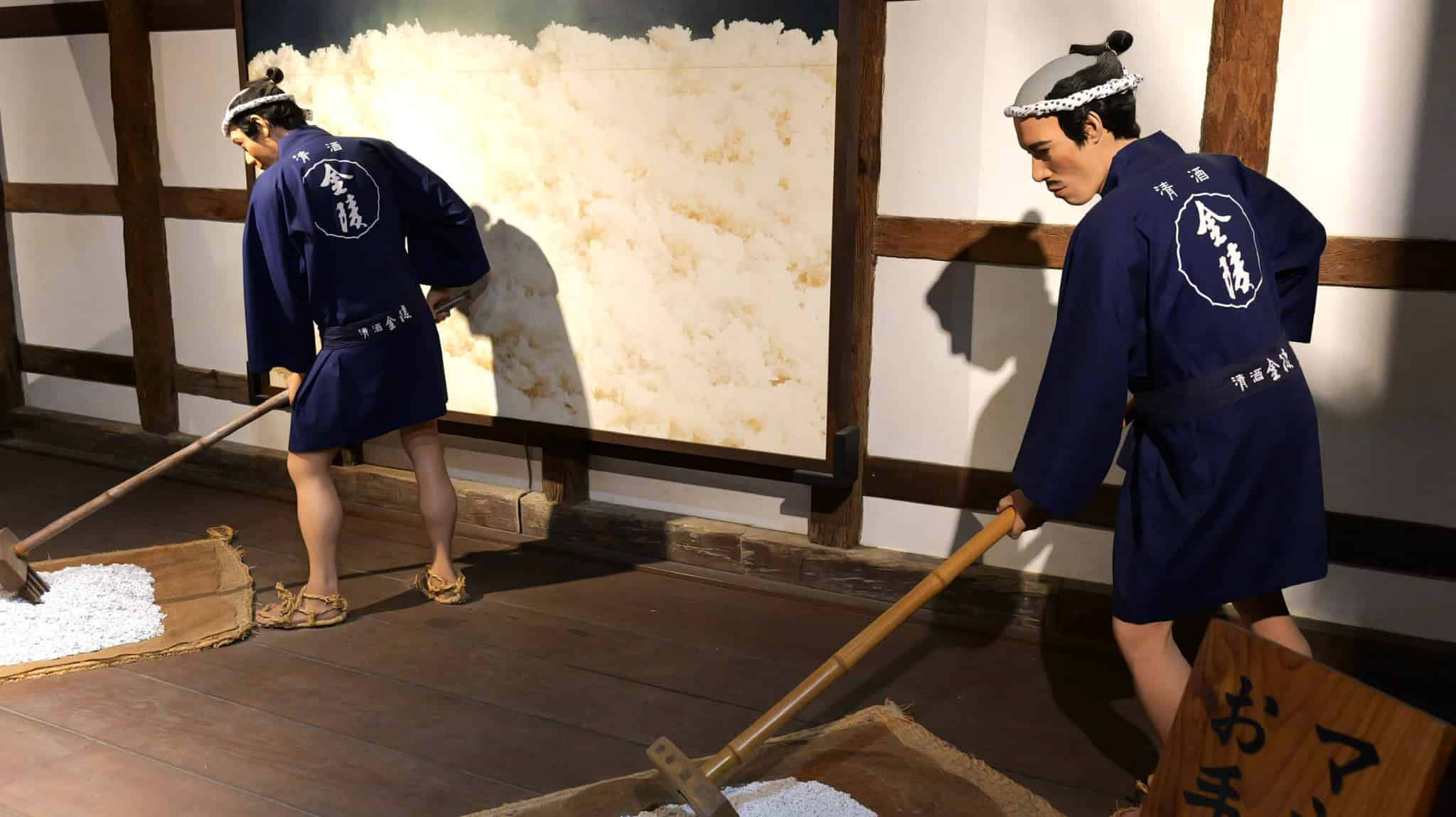
Here, the steamed rice is being cooled.

This stage in rice wine production is known as “kōji production”.
Steamed rice is brought into a room—known as a 麹室 (kōji-muro)—kept at approximately 35℃ and spread out across a table. Bacteria from a fungus known as 麹 (kōji) is then sprinkled over the rice. This process turns the starch in the rice into glucose, converting it into sugar. For the rice to ferment and produce alcohol, the starch must first be converted into sugar.

This small barrel is likely used in the next stage of rice wine production, known as “shubo production”.
Next, the steamed rice is mixed with yeast, then added to a mixture that contains kōji and water. This new mixture is then slowly fermented. The addition of yeast helps convert the sugars of the rice into alcohol. The finished product is called 酒母 (shubo).
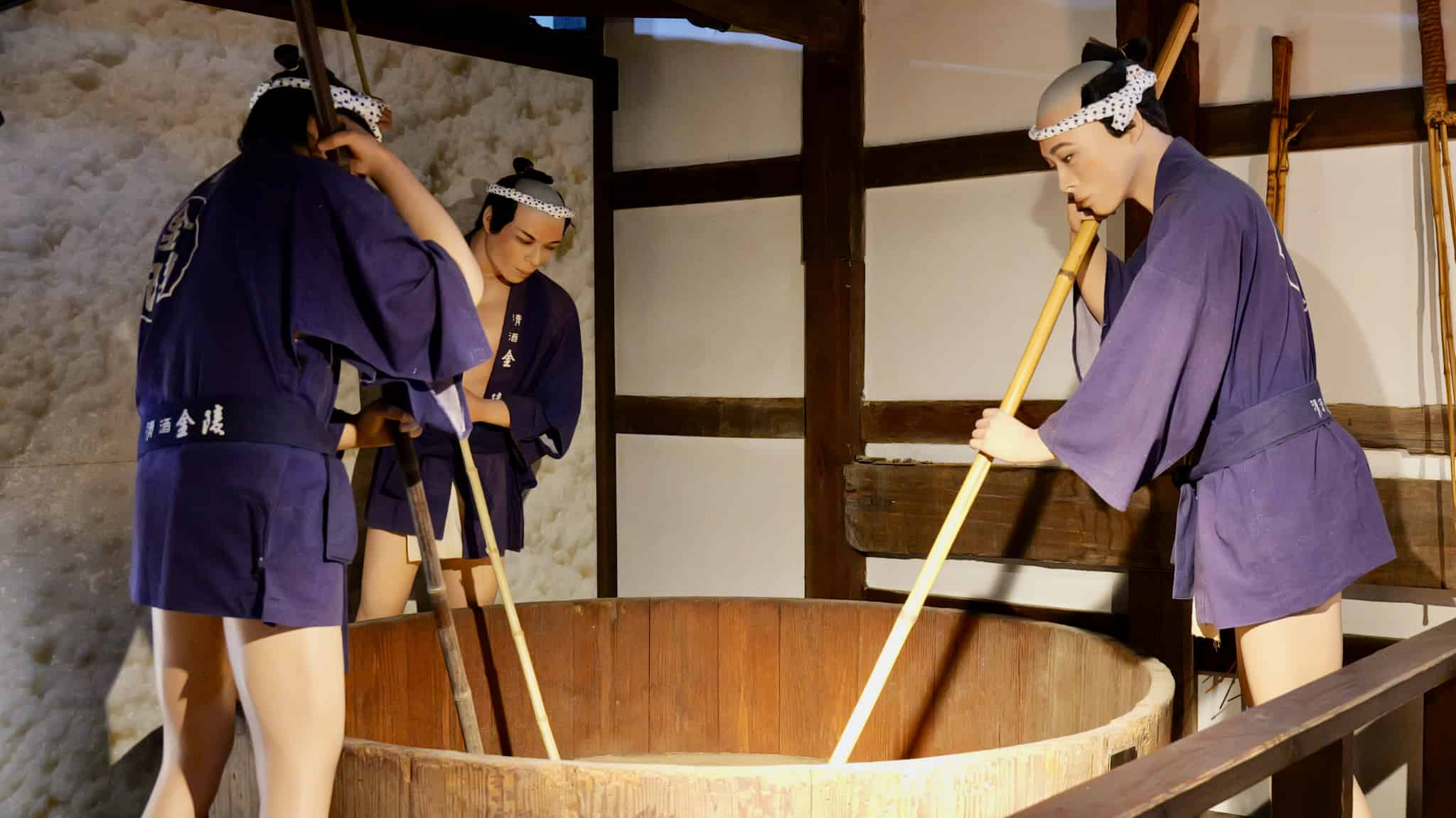
This large barrel is used in the stage of rice wine production known as “three-stage preparation・moromi production”.
The shubo is then poured into a large tank. Originally, wooden barrels were used, but today porcelain (enamel) or stainless steel tanks are more common. Kōji, steamed rice, and water are added in three stages. If everything were mixed in all at once, the yeast would not be as effective, and various bacteria could grow in the mixture. As a result, the fermentation would not proceed properly, leading to a lower quality of rice wine. This mixture is known as 醪 (moromi).
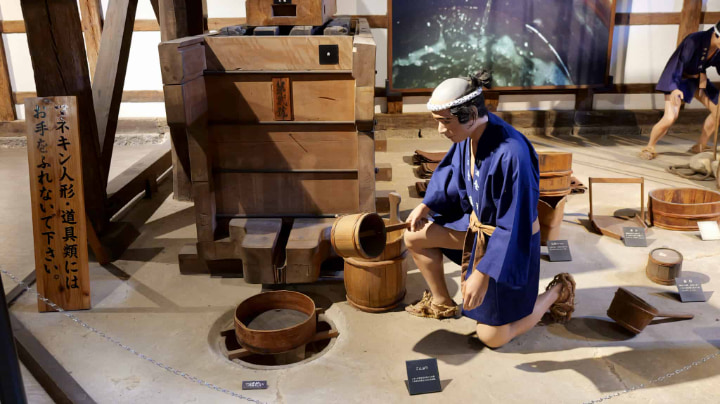
This step in rice wine production is known as “straining”.
Here, the fermented moromi is strained by applying pressure. This process separates the rice wine from the 酒粕 (sake-kasu), the solid residue remaining after fermentation. There are two methods for straining moromi. The first uses a 酒袋 (saka-bukuro), a cotton bag for filtering alcohol; the moromi is placed inside and pressed. The second is a modern method utilizing a machine called a 自動圧搾濾過機 (jidō-assaku-rokaki), which automatically and mechanically presses the moromi to separate the liquid and solids.

Unfortunately, there isn’t a photo available, but the next step in rice wine production is called “filtration”, which helps remove impurities.
Even after straining, some tiny clumps may remain in the rice wine, which are usually removed. However, depending on the type of rice wine, these clumps might be left in, and the beverage is then drunk as is. Filtration removes impurities and produces a clear (transparent) rice wine.
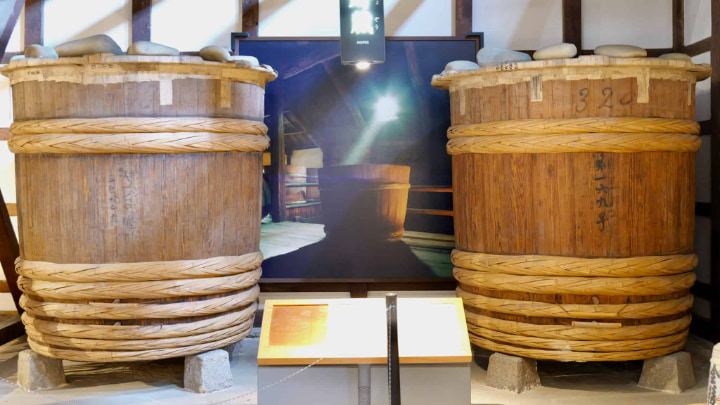
This process of rice wine production is called “heating・storage・mixing”.
The rice wine isn’t suitable for drinking on its own. Although not visible to the naked eye, there is still a small amount of yeast that remains. Because of this, fermentation continues and affects the taste. To counter this, the rice wine is heated, which stops the yeast from fermenting further. Additionally, there may be some hiochi bacteria present that can cause oxidation, altering the taste and aroma. Lactic bacteria may also be present, resulting in unpleasant flavors and odors. To remove these unwanted tastes and smells, the rice wine is heated. Once the flavor has smoothed out, it is set aside and stored, usually for about a year. After aging, it is blended with other rice wines, diluted with water, and final adjustments are made to its flavor. Even rice wines produced in the same style will not taste (exactly) the same, so these final adjustments ensure consistency across batches.
1/2